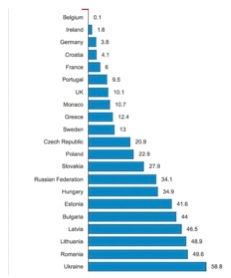- The Sustainable Lawyer

- Jun 25, 2020
- 2 min read

As legal professionals, we are responsible for ensuring that our actions do not hinder the ability of future generations to effectively practice law. This responsibility has rightly entered the agendas of lawyers in all aspects of the profession, including those at the very beginning of their legal career.
Across Law Schools, including at the University of Leicester, resources that were previously accessible in printed form, were phased out in favour of their digital alternative. An increased reliance on databases and online resources, such as WestLaw, have prepared students for the changing nature of the industry in which they aspire to enter. Experienced legal professionals, on the other hand, might not have been able to obtain such an insight during their studies, and instead, will have been forced to adapt to radical change.
For example, the centre of International Dispute Resolution in London has benefitted from the implementation of the E-Filing system, and the concept of the E-Court has been described as a ‘vision of the future’ by Deputy District Judge, Peter Causton. Whilst it might be argued that these diversions from traditional methods are merely a result of technological change, they have also served to transform environmentally oppressive processes into more sustainable ones: by reducing waste and their use of paper. Therefore, it is clear that reliance on technology in the legal profession has contributed to improvement in the efficiency and sustainability of its processes.
However, a society and legal education largely dominated by technology has also had the effect of altering the demographic of current and future generations of lawyer. The Law Society recognised in their LawTech Adoption Report (2019) that those currently entering the workforce are that of the ‘digital native’ where technology is ‘engrained’ into every aspect of their lives. It is arguable that this encompasses influencing or enforcing opinions, particularly where there is a political or policy objective. Activism on the issues of climate change and the environment on social media has been conducive to the creation of a generation of sustainability-conscious lawyers now entering a profession where sustainability itself has been placed at the forefront of the agenda.
Whilst the agenda itself will be explored in future posts, owing to our legal education, reliance on technology and increased awareness of the importance of sustainability, lawyers in our generation will be better equipped to meet its objectives.





